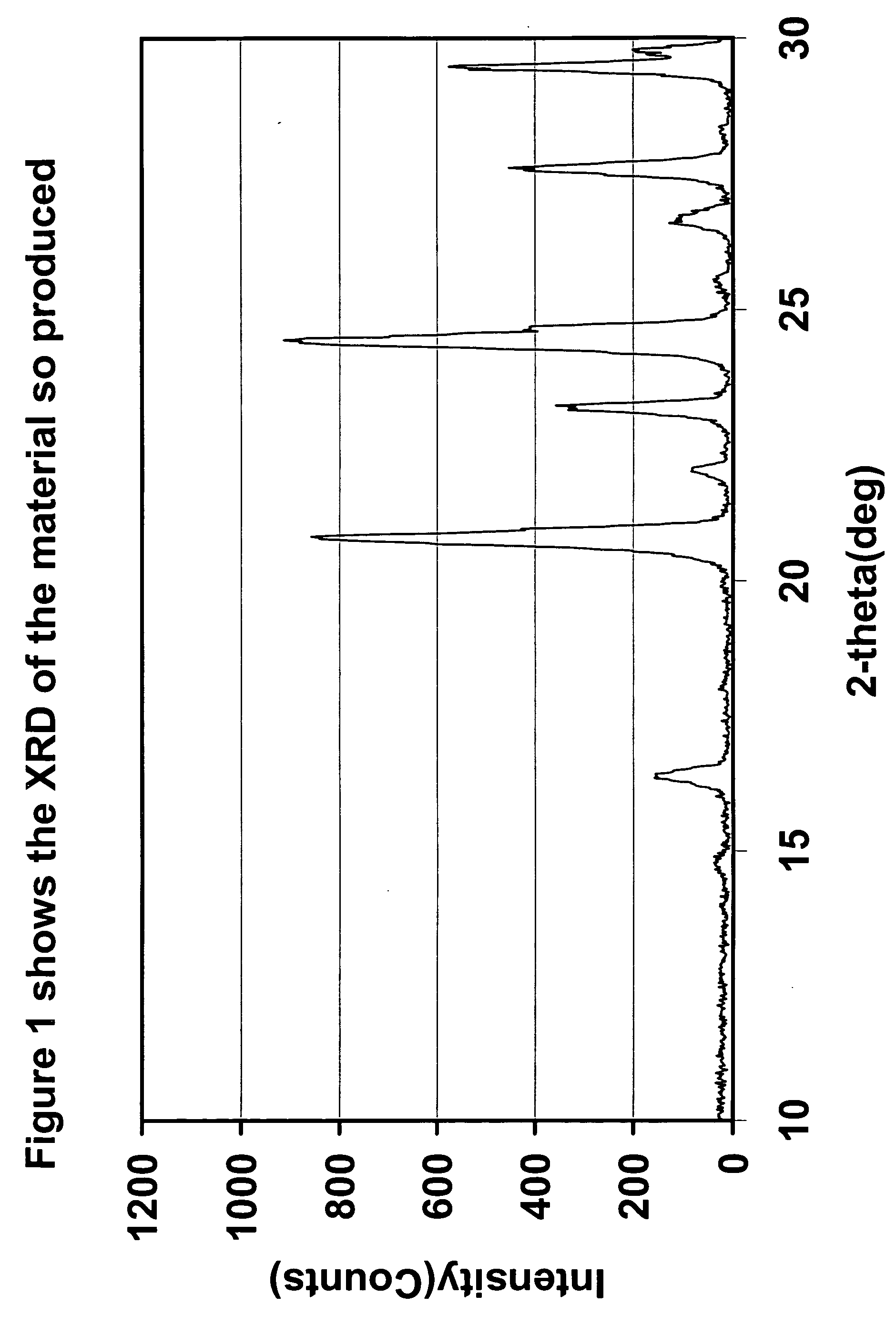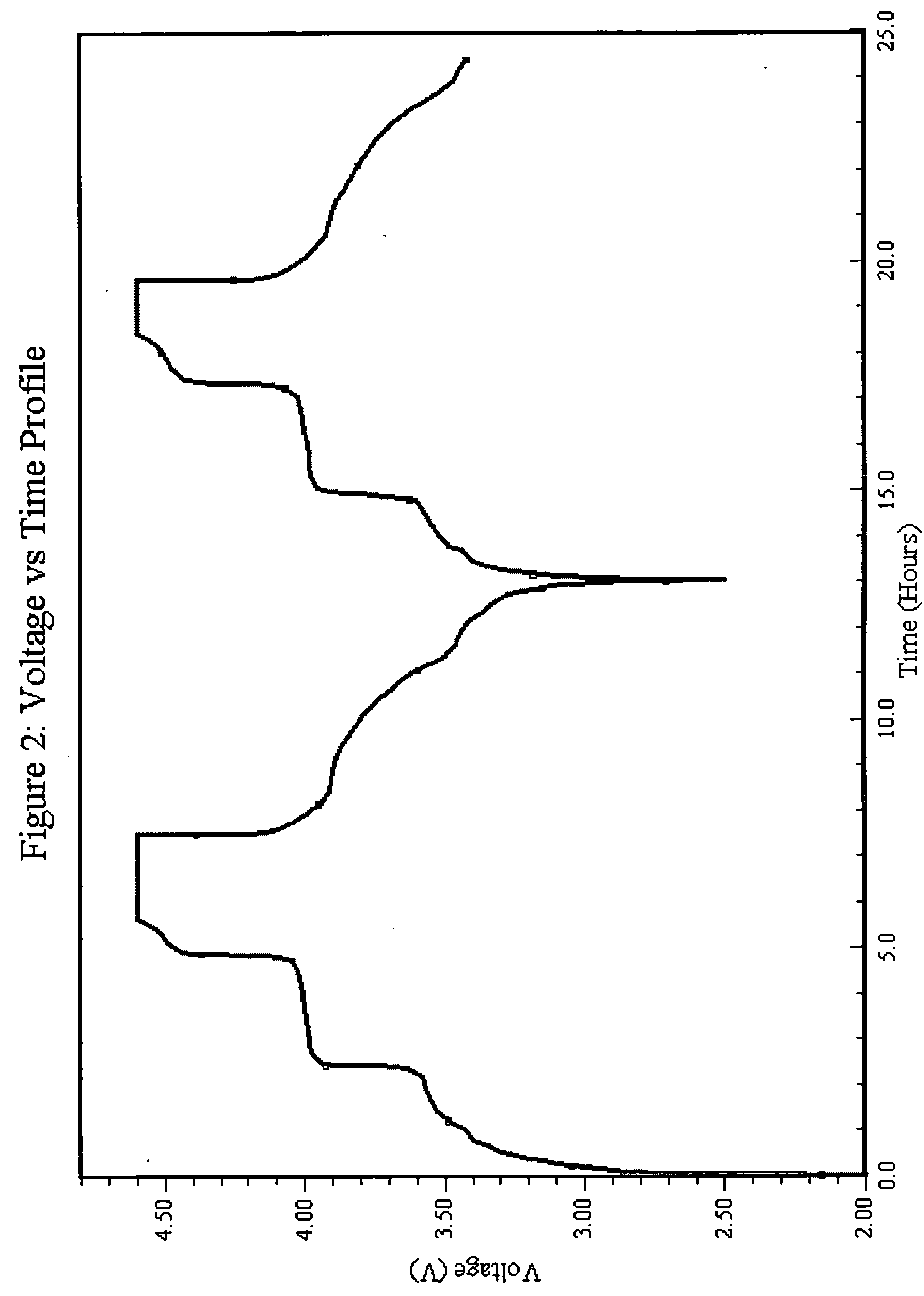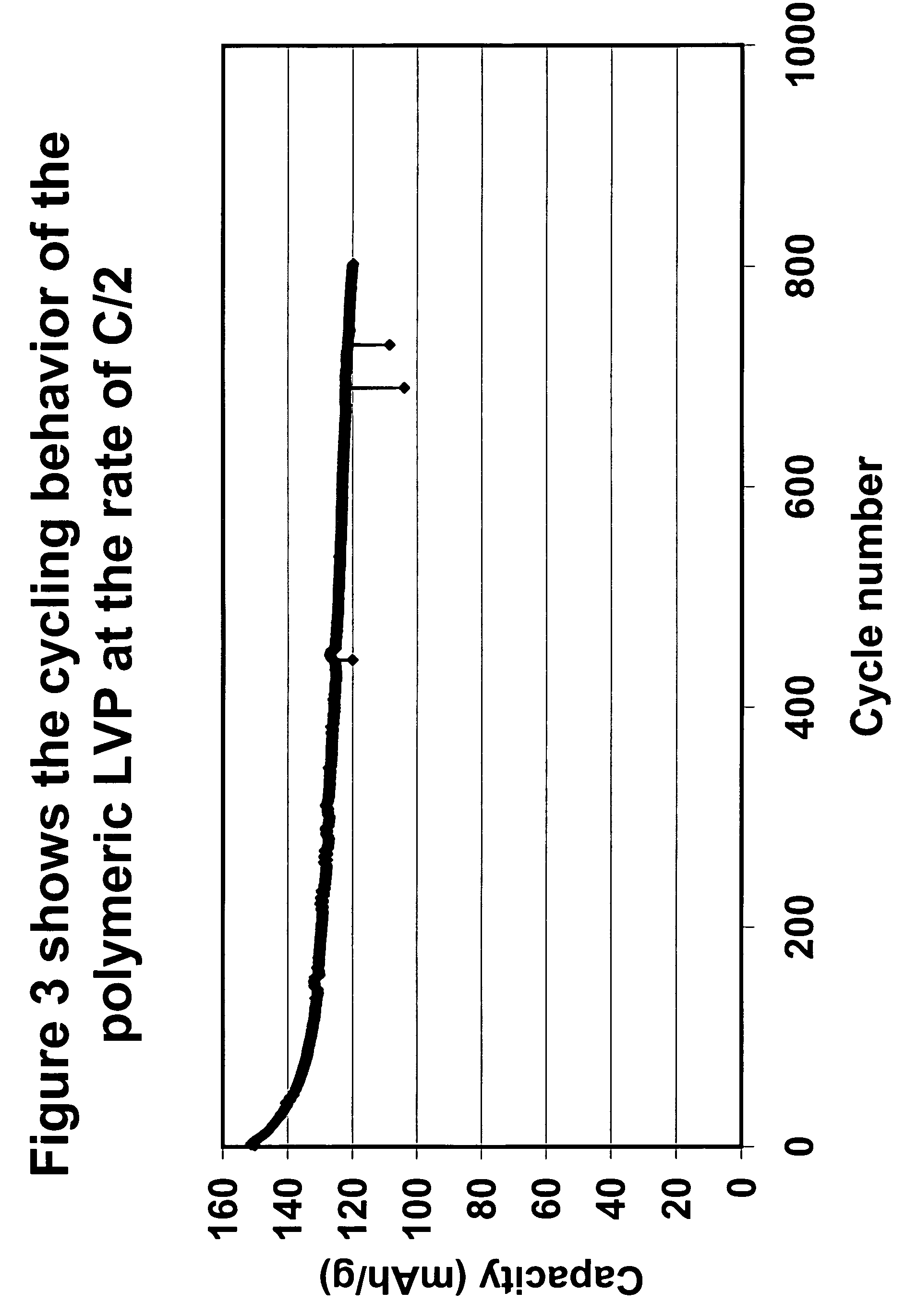Synthesis of cathode active materials
a cathode active material and active material technology, applied in the direction of arsenites/arsenates, alkali metal oxides/hydroxides, germanium dioxide, etc., can solve the problems of insufficient voltage, insufficient charge capacity, or low ionic conductivity
- Summary
- Abstract
- Description
- Claims
- Application Information
AI Technical Summary
Benefits of technology
Problems solved by technology
Method used
Image
Examples
example 1
Preparation of LVP by Wet Mixing
[0099] Polyethylene glycol (10 g, MW 2,000) and PEO (2 g) were added to H2O (50 g) while stirring to produce a solution A. LiH2PO4 (50 g) was added to solution A while stirring to produce a slurry B. V2O3 (23.79 g) was added to slurry B while stirring to produce slurry C. Slurry C was placed in a glass container and the mixture was heated to 110° C. for 12 hours to form a dried mixture.
[0100] The resulting dried mixture was then ball-milled for 12 hours. The resulting material was then heated to 400° C. at a rate of 3° C. / minute and then heated at 400° C. for two hours under argon (Ar) gas. The material was further heated to 900° C. at a rate of 5° C. / minute under argon gas and then heated at 900° C. for 8 hours. The material was then cooled to room temperature at a rate of 50 C. / minute. The material was then hammer milled and sieved to the desired particle size between about 2 and about 30μm for electrochemical testing and characterization.
[0101]F...
example 2
Preparation of LVP by Wet Mixing (5 kg Batch)
[0107] Polyethylene glycol (400 g, MW 1,000) and PEO (20 g) was added to H2O (3600 g) while stirring to produce a solution A. LiH2PO4 (4000 g) was added to solution A while stirring to produce a slurry B. V2O3 (1903.2 g) was added to slurry B while stirring to produce slurry C. Slurry C was placed in a glass container and the mixture was heated to 110° C. and then heated at 110° for 12 hours to form a dried mixture.
[0108] The resulting dried mixture was then mulled for 12 hours and then ball milled for 12 hours. The resulting material was then heated to 400° C. at a rate of 3° C. / minute and then heated at 400° C. for two hours under argon (Ar) gas. The material was further heated to 900° C. at a rate of 5° C. / minute under argon gas and then heated at 900° C. for 8 hours. The material was then cooled to room temperature at a rate of 5° C. / minute. The material was then hammer milled and sieved to the desired particle size for electrochemi...
example 3
Preparation of LVP by Wet Mixing (Super-P Carbon)
[0115] PEO (1.8 g, MW 20,000) was added to H2O (100 g) while stirring to produce a solution A. LiH2PO4 (100 g) was added to solution A while stirring to produce a slurry B. V2O3 (47.58 g) was added to slurry B while stirring to produce slurry C. Super-P carbon black (4.8 g) was then added to slurry C while stirring to produce slurry D. Slurry D was placed in a glass container and the mixture was heated to 110° C. and then heated at 110° C. for 12 hours to form a dried mixture.
[0116] The resulting dried mixture was then mulled for 12 hours and then ball milled for 12 hours. The resulting material was then heated to 400° C. at a rate of 30° C. / minute and then heated at 400° C. for two hours under argon (Ar) gas. The material was further heated to 900° C. at a rate of 5° C. / minute under argon gas and then heated at 900° C. for 8 hours. The material was then cooled to room temperature at a rate of 5° C. / minute. The material was then ham...
PUM
 Login to View More
Login to View More Abstract
Description
Claims
Application Information
 Login to View More
Login to View More - R&D
- Intellectual Property
- Life Sciences
- Materials
- Tech Scout
- Unparalleled Data Quality
- Higher Quality Content
- 60% Fewer Hallucinations
Browse by: Latest US Patents, China's latest patents, Technical Efficacy Thesaurus, Application Domain, Technology Topic, Popular Technical Reports.
© 2025 PatSnap. All rights reserved.Legal|Privacy policy|Modern Slavery Act Transparency Statement|Sitemap|About US| Contact US: help@patsnap.com



